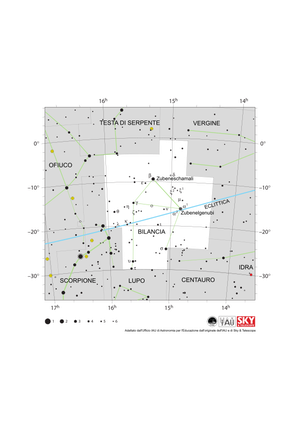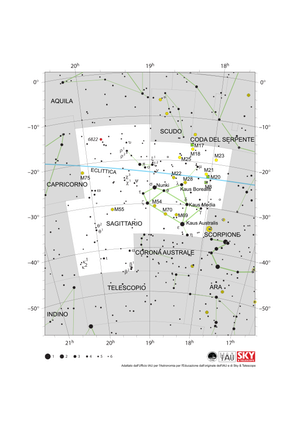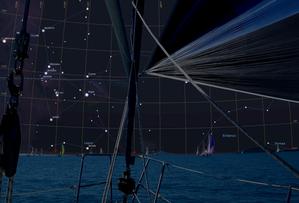Termine del Glossario Coordinate celesti
Descrizione Dalla Terra, percepiamo gli oggetti celesti come situati su una sfera, tradizionalmente chiamata sfera celeste. Possiamo descrivere qualsiasi posizione su questa sfera utilizzando due numeri. Ogni metodo per assegnare questi due numeri a una posizione nel cielo è definito sistema di coordinate celesti, e i numeri sono chiamati coordinate (celesti) dell'oggetto. Sulla superficie terrestre, utilizziamo la latitudine e la longitudine geografiche per lo stesso scopo, e in effetti un modo di definire le coordinate celesti deriva da questo: i punti del cielo che si trovano direttamente sopra l'equatore terrestre formano l'equatore celeste, e al punto direttamente sopra una certa posizione sul globo terrestre vengono assegnati dei numeri in modo simile alla latitudine/longitudine del punto base. Gli astronomi utilizzano diversi tipi di sistemi di coordinate, tra cui uno che tiene conto della rotazione giornaliera della Terra; in tal modo le coordinate sono universali e si possono utilizzare da ovunque sulla Terra. Inoltre questo garantisce che le coordinate di una stella, ad esempio, non cambino in modo significativo nel corso di giorni, mesi, o anni.
Termini correlati
- Polo Celeste
- Declinazione
- Rotazione della Terra
- Equatore
- Latitudine
- Longitudine
- Ascensione retta (RA)
Vedi questo termine in altre lingue
status del termine e della definizione La definizione originale di questo termine in inglese é stata approvata da un ricercatore astronomo e da un docente La traduzione di questo termine e della sua definizione sono state approvate da un ricercatore astronomo e da un docente
Il Glossario Multilingue OAE é un progetto dell'Ufficio IAU per la didatticadell'astronomia (OAE) in collaborazione con l'ufficio IAU OAO per la DivulgazioneAstronomica (OAO). I termini e le definizioni sono stater scelte, scritte eriviste da un impegno collettivo da parte di OAE, i Centri e i Nodi OAE e iCoordinatori Nazionali per la Didattica dell'Astronomia e da altri volontari.Potete trovare una lista completa dei crediti, Tutti i termini del glossarioE le definizioni sono pubblicate su Creative Commons CC BY-4.0 licenza e dovrebbero essere accreditate ad IAU OAE.
Se noti un errore di fatto o di traduzione in questo termine del glossario, per favore contattaci.
Diagrami correlati
Crux Constellation Map
Crediti: Adapted by the IAU Office of Astronomy for Education from the original by IAU/Sky & Telescope.
License: CC-BY-4.0 Creative Commons Attribuzione 4.0 Internazionale (CC BY 4.0) icone
Mappa della costellazione di Orione
Crediti: Adattato dall'Ufficio IAU di Astronomia per l'educazione dall'originale di IAU/Sky & Telescope
License: CC-BY-4.0 Creative Commons Attribuzione 4.0 Internazionale (CC BY 4.0) icone
Mappa della Costellazione della Bilancia
Crediti: Adattato dall'Ufficio IAU di Astronomia per l'Educazione dall'originale di IAU/Sky & Telescope
License: CC-BY-4.0 Creative Commons Attribuzione 4.0 Internazionale (CC BY 4.0) icone
Mappa della costellazione dello Scorpione
Crediti: Adattato dall'Ufficio IAU di Astronomia per l'educazione dall'originale di IAU/Sky & Telescope
License: CC-BY-4.0 Creative Commons Attribuzione 4.0 Internazionale (CC BY 4.0) icone
Mappa della costellazione del Sagittario
Crediti: Adattato dall'Ufficio IAU per l'Astronomia per l'Educazione dall'originale di IAU/Sky & Telescope
License: CC-BY-4.0 Creative Commons Attribuzione 4.0 Internazionale (CC BY 4.0) icone
Attività correlate
Navigation in the Ancient Mediterranean and Beyond
astroEDU educational activity (links to astroEDU website) Description: Learn the ancient skill of Celestial Navigation
License: CC-BY-4.0 Creative Commons Attribuzione 4.0 Internazionale (CC BY 4.0) icone
Etichette:
History
, Geography
, Celestial navigation
Fasce d'età
14-16
, 16-19
Livello di istruzione
Middle School
, Secondary
Aree di apprendimento
Discussion Groups
, Modelling
, Social Research
Costi:
Low Cost
Durata:
1 hour 30 mins
Dimensione del Gruppo:
Group
Abilità:
Analysing and interpreting data
, Asking questions
, Communicating information
, Developing and using models
, Planning and carrying out investigations
, Using mathematics and computational thinking














